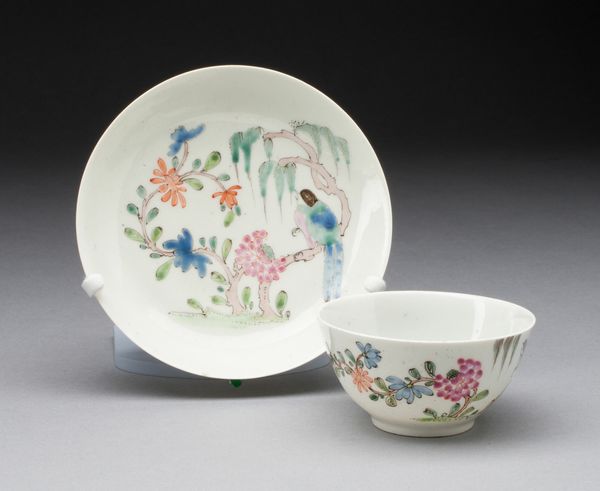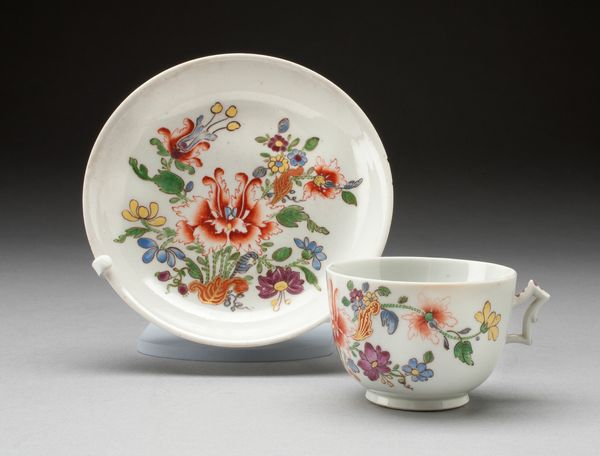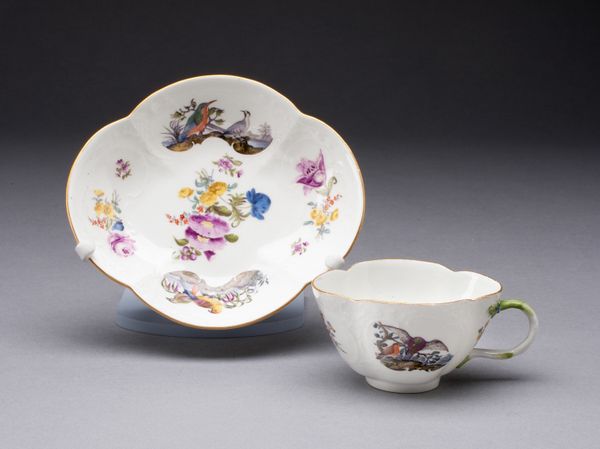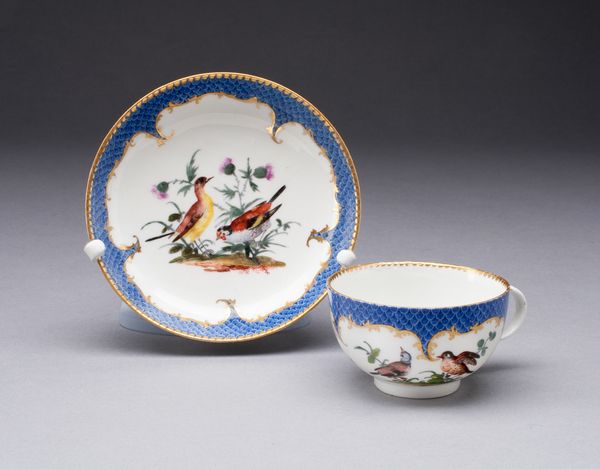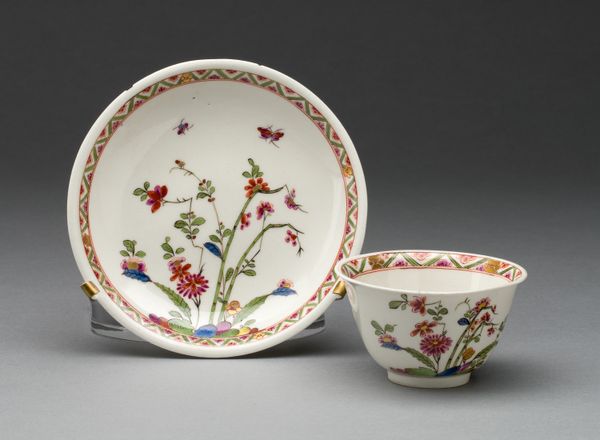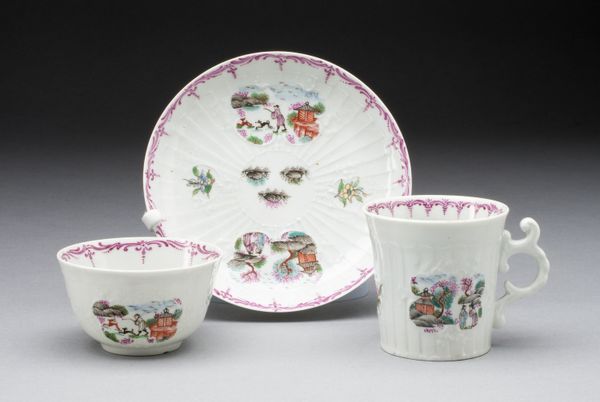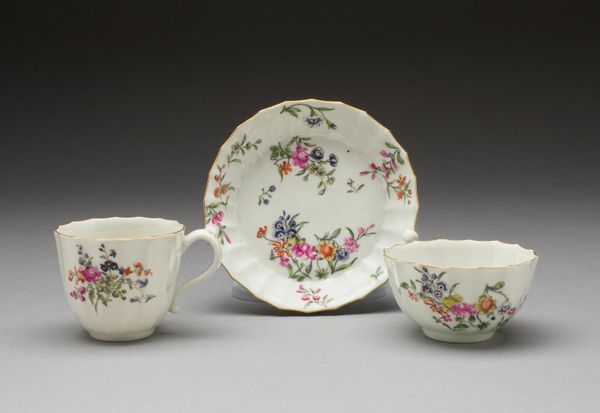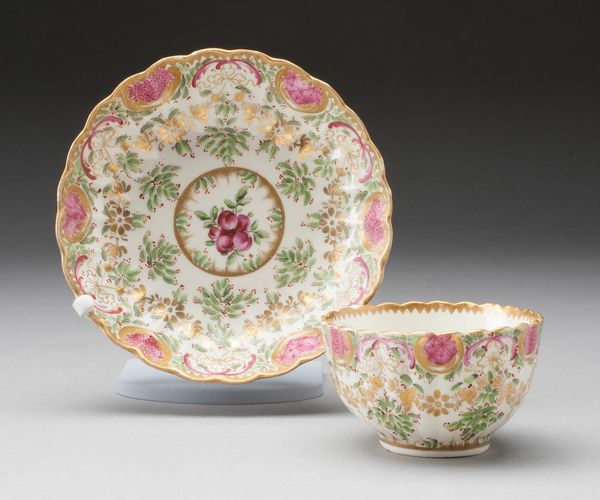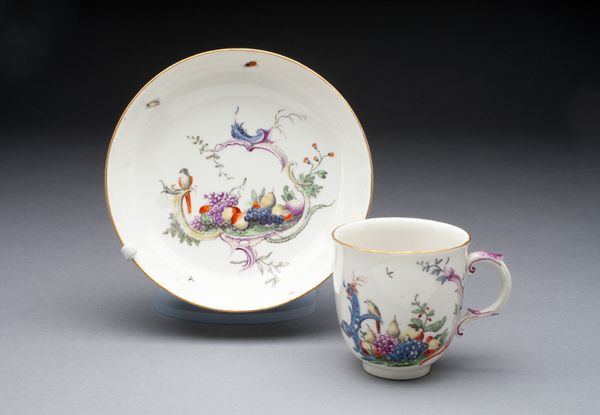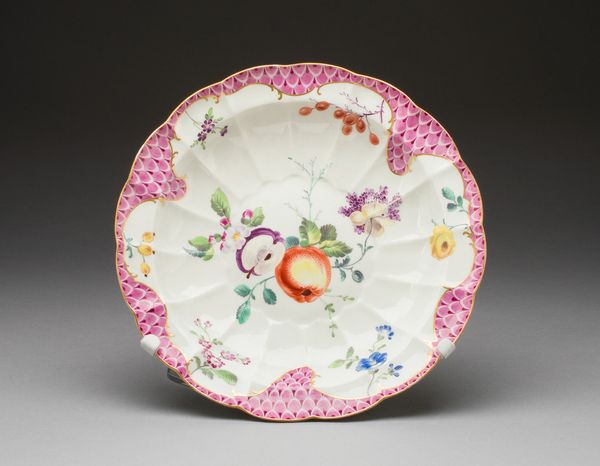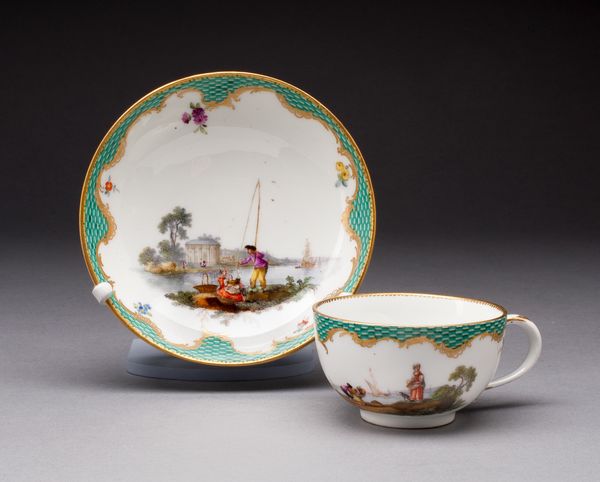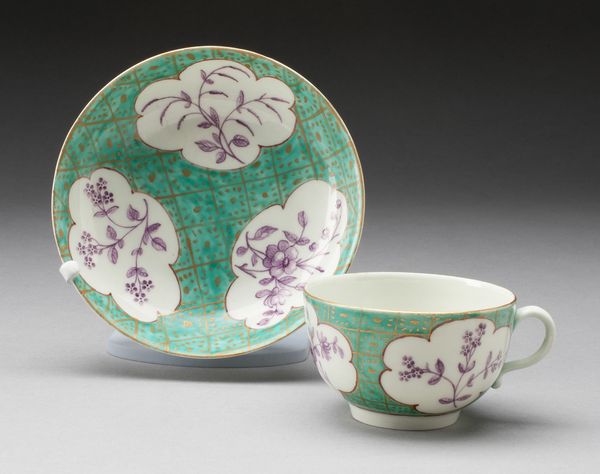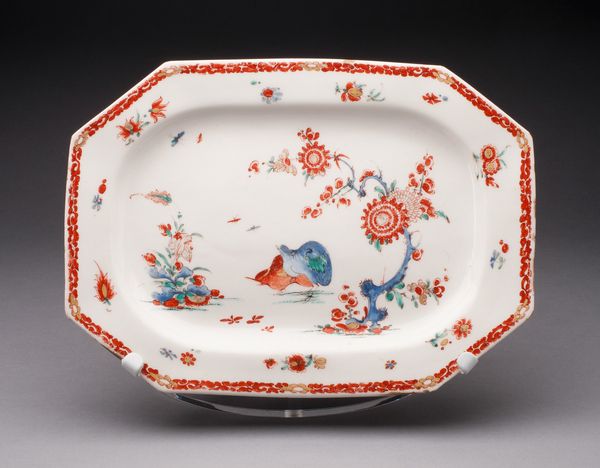
painting, ceramic, porcelain, earthenware
#
painting
#
ceramic
#
porcelain
#
earthenware
#
orientalism
#
ceramic
#
decorative-art
#
rococo
Dimensions: Cup: H. 4.5 × 7.3 cm (1 3/4 × 2 7/8 in.); diam. 7.3 cm (2 7/8 in.); Saucer: depth. 2.5 cm (1 in.); diam. 12.2 cm (4 13/16 in.)
Copyright: Public Domain
Editor: This lovely "Tea Bowl and Saucer," created around 1735 by the Meissen Porcelain Manufactory, stands out with its vibrant colors and delicate painting on porcelain. I'm really drawn to the floral patterns; it's visually striking. How do you read this piece through a formalist lens? Curator: Its form certainly compels close observation. Notice how the circular shapes—the bowl, the saucer, and the floral arrangements—create a unified visual experience. The porcelain material itself, with its smooth, reflective surface, serves as a canvas for the painted decoration. We should consider how the arrangement of floral motifs functions formally. Do you see a consistent pattern, or perhaps a deliberate asymmetry? Editor: I see bursts of flowers in varying sizes, but they don't seem completely symmetrical. They feel…balanced, but in a more dynamic way? Curator: Precisely. It is through such subtle asymmetry, achieved with color variance and graduated pattern density, that visual interest is generated and tension avoided. Now, observe the relationship between the rim decorations and the central floral compositions. How do those contrasting lines and shapes influence your perception of the whole? Editor: The rims have a more geometric pattern which contains and frames the organic florals, adding definition and focus to the overall composition. So, formalistically, it's all about how those shapes, lines, colors and materials interact with one another on the object, rather than necessarily the flowers depicted themselves? Curator: Indeed. One could then argue that even in pieces ostensibly displaying flowers, form trumps mere iconography. Ultimately, careful study yields appreciation of the creator’s ability to achieve aesthetic resolution in the composition. Editor: That’s a great way to approach this work – focusing on how those compositional decisions affect the art. Thank you!
Comments
No comments
Be the first to comment and join the conversation on the ultimate creative platform.
